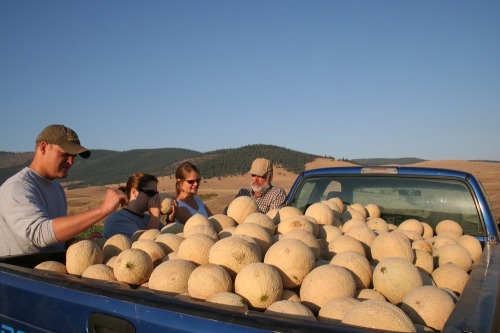By Paula Crossfield
[Paula Crossfield is a founding editor of Civil Eats, a regular contributor to the Huffington Post, a contributing producer at WNYC’s The Leonard Lopate Show, and an avid cook and urban gardener. (I’ve seen her rooftop garden, and it’s amazing.) Follow her on Twitter.]
With one in three children (and one in two children of color) overweight or obese in this country, the health of America’s kids is under the microscope and, for the first time in our history, children born now will not live as long as their parents. Michelle Obama has launched her Let’s Move campaign and Jamie Oliver’s Food Revolution brought the school cafeteria to television. But as Oliver’s program showed, one of the biggest barriers to changing kids’ eating is a lack of labor and expertise.
One step in the right direction is FoodCorps, an AmeriCorps program that would put service members to work building school gardens and establishing farm-to-school relationships in towns across the United States, specifically in places where people lack access to fresh produce. A collaboration between the National Farm to School Network, Slow Food USA and other groups, the FoodCorps program could begin as early as 2011.
As more and more young people seek to get involved with farming and food access initiatives, FoodCorps would provide volunteers with the opportunity to work in this field while earning a modest living, health care benefits and a chance for additional money––for school or paying off educational loans––after their service. And unlike the Child Nutrition Act, which continues to suffer delays in Congress ––and which some argue does not allocate enough money to make significant change––FoodCorps could make a difference in child nutrition more swiftly.
“FoodCorps will deliver a significant additional infusion of resources in just a handful of schools: the places where childhood obesity has hit hardest and healthy food is most urgently needed,” said Curt Ellis, a member of the planning team and co-creator of King Corn. “The program complements existing school food programs, without being constrained by their challenges.”
One impetus for the project was the Kennedy Serve America Act, which will raise the number of available AmeriCorps volunteer positions from 75,000 to 250,000 by 2017, and the FoodCorps team has taken inspiration from similar successful programs in Montana, Wisconsin and Iowa. The planners will take the best of these models and scale them up to produce the first national program focused on farm-to-school procurement and school garden-based education.
Crissie McMullan, who started Montana FoodCorps and is now on the planning team for the national program, said one of the difficulties faced by FoodCorps service members in Montana was finding local food for the federal reimbursement rate of around one dollar per child per meal. But it wasn’t impossible. “One Montana FoodCorps member figured out that some apple growers had a surplus of fruit too small to sell at the farmers market,” she said. “Those apples were a perfect fit for the schools, who saw them not as ‘too small’ but instead as ‘kid-sized.’”
The program also aims to raise the profile of farming as a profession, inspiring newcomers to consider the occupation. “FoodCorps provides a gateway into careers in food and agriculture for a generation of young service members who want to get their hands dirty,” said Ellis. “To me, that’s what makes the program so exciting, that we serve the communities where we are working by getting fresh healthy food into school systems and teaching kids where food comes from, and we serve the service members in the program by giving them an opportunity to try their hand at farming, and see if that is a career they would like to pursue.”
(Photo caption: Second-year Montana FoodCorps volunteer, Sarah Kester, and food service staff at The University of Montana checking out a fresh harvest of local melons, which they quickly bought and served up in the cafeteria. Photo by University of Montana University Dining Services)


Yay Foodcorps. We need more farmers!
What an awesome idea! I wonder what the odds are of getting something like that started up here in Canada? As far as the shape of our kids, the border may as well not exist…same problems up here (as with many things).